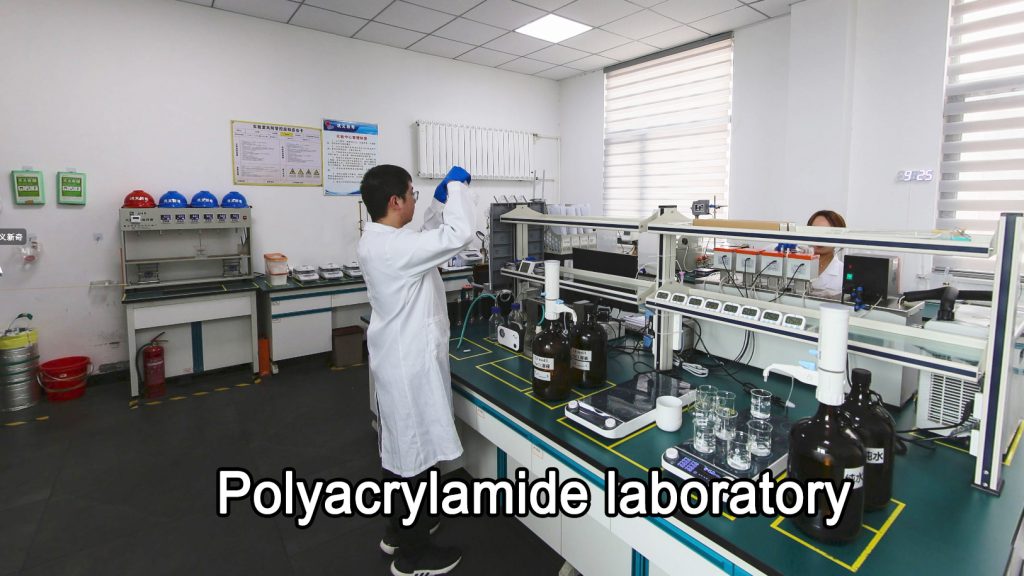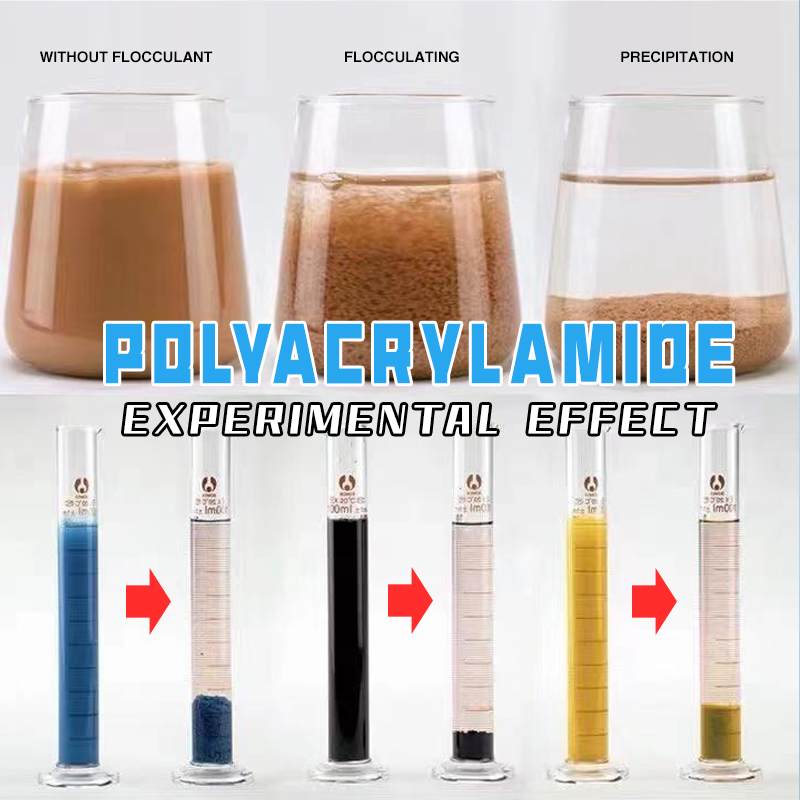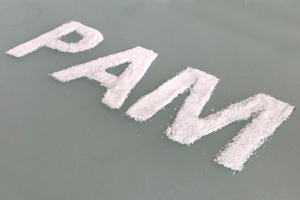The polyacrylamide flocculant produced by our factory is a high-molecular organic compound, most of which have a molecular weight of more than several million and some even close to 20 million. Therefore, their dissolution methods are very different from those of inorganic small-molecule iron salts and aluminum salt coagulants. Generally speaking, the following principles should be followed:

- Polyacrylamide flocculant cannot be directly added to sewage. It must be dissolved in water before use, and its aqueous solution is used to treat sewage.
- The water in which the polymer is dissolved should be clean water (such as tap water) and not sewage. Normal-temperature water is enough and generally does not need to be heated. The water temperature is lower than 5°C and dissolves very slowly. Increasing the water temperature increases the dissolution rate, but above 40°C will accelerate the degradation of the polymer and affect the use effect. Generally, tap water is suitable for preparing polymer solutions. Water with strong acid, strong alkali and high salt content is not suitable for preparation.
- The concentration ratio of the polymer solution is recommended by our factory to be 0.1% to 0.3%, that is, add 1-3g polymer powder to 1 liter of water.
Concentration selection should consider the following factors:
The preparation tank is small and the daily dosage is large, it is recommended to prepare a little thicker (such as 0.3%); when the molecular weight of the polymer is high, it is recommended to prepare a little thinner (such as 0.1%);
When the polymer solution is poured into the sewage, if the dispersion state is not good due to equipment reasons, it is recommended to make it slightly thinner.
In short, if the polymer concentration is too high, the load on the agitator motor will be too large, and it will also cause poor dispersion after flowing into the sewage, which will affect the use effect.
- Do not use a centrifugal pump to transfer the prepared solution, so as to avoid shear degradation of the polymer caused by high-speed rotating blades. The specific method of preparation is as follows: add a certain amount of clear water to the container (such as a beaker in the laboratory, or a preparation tank in the factory), calculate the amount of powdery polymer required according to the amount of clear water and concentration, and weigh out the polymer;
Turn on the electric stirrer and stir the clear water into a vortex. The linear speed of the end of the stirrer blade should not exceed 8 m/s to avoid degradation of the polymer, but it should not be too slow to prevent the polymer particles from floating on the water or sinking Shen and Tuan.
Slowly sprinkle the polymer into a swirl of water until all is spread. Note that the polymer particles cannot stick to each other or form agglomerates after entering the water. Then stir for a period of time to fully dissolve the polymer particles, and finally become a uniform, transparent, viscous solution without visible agglomerates. This period of stirring time is determined by the following method:
A: When the water temperature is high in summer, the anionic and cationic polymers need to be stirred for about 1 hour, and the non-ionic polymers need to be stirred for about 2 hours;
B: When the water temperature is low in winter, the anionic and cationic polymers need to be stirred for about 1.5 hours, and the non-ionic polymers need to be stirred for about 3 hours;
Iron ions are catalysts that cause the chemical degradation of all polyacrylamides. Therefore, when preparing, transferring, and storing polyacrylamide solutions, try to avoid the entry of iron ions. Equipment that comes into contact with the solution is preferably constructed of stainless steel, plastic, fiberglass, or resin-coated carbon steel.

During use, it is sometimes used together with PAC, PFS, and other water treatment chemicals.

